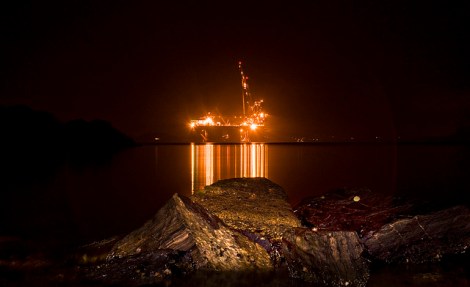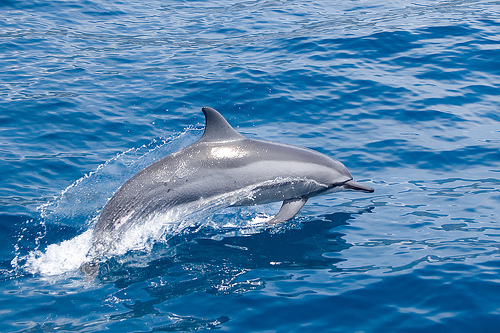When oil companies are trying to figure out where to drill offshore, they drag an array of seismic air guns behind a boat as it sails around the ocean. Submerged air guns fire bursts of air downward to create sound waves that travel to the ocean floor and rebound back up to sensors. Here’s what that looks like from the surface:
Underneath, however, it’s much less entertaining. Arrays contain dozens of guns, each of which produces a burst with tens of thousands of times as much energy as a jet engine, according to Oceana Deputy Vice President Jacqueline Savitz, as reported by FuelFix. Good for getting sonar readings on the ocean floor. Bad for any animals that are swimming in the vicinity.
This is one reason that New Jersey lawmakers wrote a letter to President Obama, asking him to stop seismic surveys on the East Coast. The other reason: Who wants an oil well offshore? From FuelFix:
Noting that the geophysical research is the first step in a long path to offshore oil drilling, [Rep. Frank] Pallone said the administration’s Interior Department should “put a stop to [seismic testing] before we experience a Deepwater Horizon-like disaster in the Atlantic.” …
Although the [Bureau of Ocean Energy Management’s] five-year plan for selling offshore oil and gas leases through 2017 does not include any planned auctions of Atlantic waters, seismic research today could pave the way for future drilling in the region. Data indicating potential big untapped resources could add pressure for future administrations to lease Atlantic tracts and help plan any auctions in the area.

magneraAn offshore rig near Norway.
The Interior Department has done an assessment of wildlife in the area where oil companies would like to shoot off their seismic air guns.
According to the ocean energy bureau, 38 marine mammal species are in the area that could be surveyed, including endangered baleen whales and manatees. The bureau’s draft environmental study concluded that seismic surveys could affect as many as 11,748 bottle nose dolphins, 4,631 short-finned pilot whales and 6,147 short-beaked common dolphins.
On one side: 20,000 dolphins and whales not deafened by bursts of air; innumerable sea animals not coated with oil in a worst-case-scenario spill. On the other: more oil — and profits — for oil companies.
In modern American politics, that’s somehow a toss-up.


